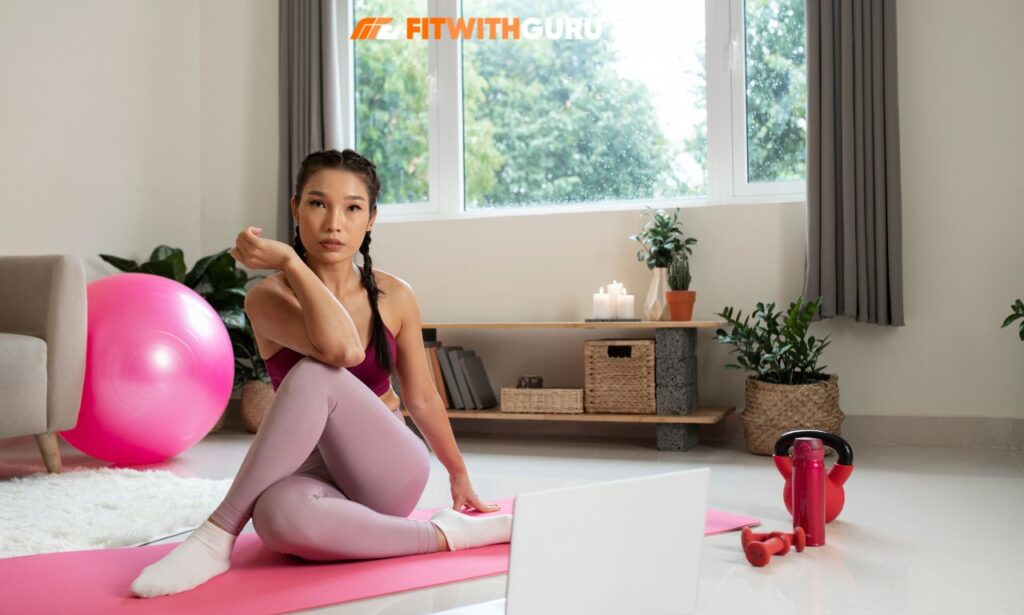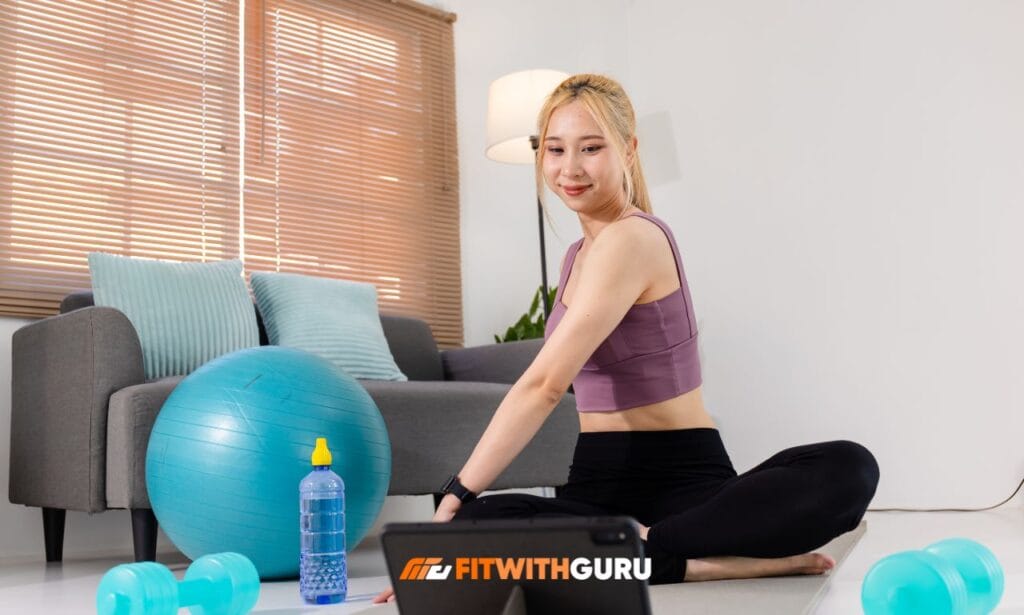A well-designed home exercise program can transform your fitness journey without requiring expensive gym memberships or specialized equipment. In today’s fast-paced world, finding time to hit the gym has become increasingly challenging. Home-based fitness offers accessibility, convenience, and the ability to customize workouts according to your specific needs.
Why Choose a Home Exercise Program Over Traditional Gym Workouts
Home exercise programs offer unparalleled flexibility that traditional gyms cannot match. You eliminate travel time, avoid crowded equipment, and work out on your schedule without worrying about gym hours.
Privacy allows you to focus entirely on your movements without self-consciousness. Studies show people who exercise at home are 43% more likely to maintain consistent workout routines. This consistency stems from reduced barriers – no commute, no waiting for equipment, and no pressure.
Essential Equipment for Your Home Exercise Programs
Budget-Friendly Equipment Options
Starting a home exercise program doesn’t require a significant financial investment. Resistance bands offer incredible versatility for strength training and cost less than $20. A yoga mat provides cushioning for floor exercises for around $15-30.
Adjustable dumbbells replace an entire weight rack and save space. A stability ball adds core-strengthening opportunities.

Advanced Equipment Options
Suspension trainers like TRX systems provide full-body workouts using body weight resistance. Pull-up bars enable upper-body strength development without permanent installation. Adjustable benches expand exercise possibilities for both upper and lower body workouts. Smart fitness mirrors bring professional instruction directly into your living room.
Home Exercise Program for Seniors: Safe and Effective Fitness
Low-Impact Exercises for Mature Adults
A home exercise program for seniors focuses on maintaining mobility, balance, and functional strength. Chair-based exercises provide excellent starting points for seniors with limited mobility. Gentle stretching routines help maintain flexibility and reduce joint stiffness.
Walking in place provides cardiovascular benefits without requiring outdoor conditions. Resistance band exercises allow strength training while minimizing joint stress. Balance exercises like standing on one foot help prevent falls.
Building Strength Safely at Home
Senior-focused programs emphasize progressive overload through increased repetitions rather than heavier weights.
- Wall push-ups provide upper-body strengthening without floor strain.
- Seated leg extensions help maintain lower-body strength for daily activities.
- Modified planks against walls build core strength while accommodating varying fitness levels.
- Tai Chi combines strength, flexibility, and balance training in flowing sequences.
Home Exercise Programs Physical Therapy: Recovery and Rehabilitation
Therapeutic Exercise Principles at Home
A home exercise program physical therapy approach focuses on targeted movements addressing specific injuries.
- Range of motion exercises help maintain joint flexibility during recovery periods.
- Isometric exercises allow muscle strengthening without joint movement.
- Graduated strengthening protocols ensure progressive improvement without risking re-injury.
- Balance training helps restore spatial awareness often compromised after injuries.
Creating a Recovery-Focused Routine
Physical therapy home programs require careful attention to form and progression. Daily consistency with shorter sessions proves more beneficial than sporadic longer workouts. Heat and cold therapy integration can enhance recovery and reduce inflammation.
Monitor pain levels and adjust intensity to prevent setbacks. Communication with healthcare providers ensures home exercises complement professional treatment.
Complete Bodyweight Home Exercise Program
Upper Body Bodyweight Exercises
Bodyweight training forms the foundation of effective home exercise programs.
- Push-ups remain the gold standard, with modifications from wall push-ups to one-arm variations.
- Pike push-ups target shoulder muscles by positioning your body in an inverted V shape.
- Tricep dips using chairs effectively target the back of your arms.
- Plank variations engage core muscles while building upper body strength.
- Mountain climbers combine upper body stability with cardiovascular conditioning.
Lower Body Power Without Weights
- Squats provide comprehensive lower-body development while improving functional movement patterns.
- Lunges in multiple directions challenge balance while strengthening legs from various angles.
- Single-leg exercises like step-ups build unilateral strength and address muscle imbalances.
- Jump squats add explosive power development to traditional strength training.
- Glute bridges target posterior chain muscles, often weakened by desk work.
- Wall sits build isometric leg strength through sustained muscle contractions.
High-Intensity Interval Training (HIIT) at Home
Maximizing Time Efficiency
HIIT represents the most time-efficient approach to home exercise programs. Alternating high-intensity and recovery periods boosts metabolism for hours after workout completion. Bodyweight HIIT circuits require no equipment while providing cardiovascular and strength benefits.
Tabata protocols use 20 seconds of maximum effort followed by 10 seconds rest. Customizable work-to-rest ratios adapt for different fitness levels and goals.
Sample HIIT Workout Structure
Include 5-minute warm-ups to prepare your body for intense exercise. Select exercises targeting major muscle groups while maintaining proper form. Use active rest like marching in place rather than complete inactivity. Cool down with stretching to reduce muscle soreness and improve flexibility. Progressive overload comes through increased work periods or decreased rest times.
Home Workout Program Beginner: Starting Your Fitness Journey
Building Exercise Habits Gradually
A home workout program beginner should prioritize consistency over intensity. Start with 15-20 minute sessions three times per week. Fundamental movement patterns like squats, lunges, push-ups, and planks form the foundation.
Progressive difficulty through increased repetitions ensures continuous improvement. Rest days between workouts allow muscle recovery and prevent burnout. Track progress through exercise duration or repetition counts for motivation.

Common Beginner Mistakes to Avoid
New exercisers often attempt advanced routines too quickly, leading to injury. Skipping warm-up and cool-down periods increases injury risk. Comparing progress to social media creates unrealistic expectations. Ignoring proper form for higher repetitions can lead to poor movement patterns.
All-or-nothing mentalities cause program abandonment after missing workouts. Focus on functional improvements rather than solely on aesthetics.
Home Exercise Program Benefits: Why Home Workouts Work
Physical Health Advantages
Home exercise programs provide identical physiological benefits to gym workouts when properly designed. Convenience factors lead to higher adherence rates and better long-term health outcomes. Customization allows targeting specific health concerns that group classes cannot address.
Reduced exposure to germs supports overall health maintenance. Time efficiency enables more frequent, shorter workouts. Cost savings can be redirected toward healthy nutrition investments.
Mental Health and Lifestyle Benefits
Home workouts eliminate social anxiety that prevents many from exercising regularly. Flexible scheduling accommodates varying routines without derailing fitness goals. Privacy allows experimentation with different workout styles without judgment.
Family involvement fosters shared healthy activities that benefit multiple household members. Control over the environment enhances workout enjoyment and motivation levels.
Creating Your Personalized Home Exercise Program
Assessment and Goal Setting
Successful programs begin with an honest assessment of current fitness levels and realistic goals. SMART goals (Specific, Measurable, Achievable, Relevant, Time-bound) provide structure. Physical limitations require a consultation with a healthcare provider before beginning new routines.
Schedule analysis helps identify optimal workout times when energy levels are high. Space and equipment inventory determine which exercises are practically feasible.
Program Design Principles
Effective programs follow periodization principles, varying intensity over time. Weekly structure should balance strength, cardio, flexibility, and recovery. Progressive overload ensures continuous improvement through gradually increased difficulty. Exercise variety prevents boredom and ensures comprehensive fitness development. Regular program evaluation maintains effectiveness as fitness levels improve.
| Program Component | Beginner | Intermediate | Advanced |
| Strength Training | 2-3x/week | 3-4x/week | 4-5x/week |
| Cardio | 2-3x/week | 3-4x/week | 4-6x/week |
| Flexibility | Daily | Daily | Daily |
| Rest Days | 2-3/week | 1-2/week | 1-2/week |
Frequently Asked Questions
How long should my home exercise program sessions be?
Effective sessions range from 15 minutes for beginners to 60 minutes for advanced exercisers. Consistency matters more than duration – three 20-minute weekly sessions beat one 60-minute session. High-intensity workouts require shorter durations, while lower-intensity activities can be sustained longer.
What’s the minimum equipment needed to start a home exercise program?
You can begin with no equipment, using bodyweight exercises. A yoga mat and resistance bands provide excellent starting equipment for under $50. These basic tools enable hundreds of exercise variations targeting all major muscle groups.
How do I stay motivated to exercise at home without others around?
Set specific workout times and treat them as unmovable appointments. Create dedicated workout spaces to signal your brain it’s exercise time. Use virtual workout partners through video calls or fitness apps for accountability.
Can seniors safely follow a home exercise program without supervision?
Seniors can exercise safely at home by starting with low-intensity movements. Chair-based exercises provide stability for those with balance concerns. Consult healthcare providers before beginning new programs for individual health conditions.
How often should I change my home exercise program routine?
Change routines every 4-6 weeks to prevent adaptation plateaus. Beginners should master basic movements before introducing variety. Progressive overload through increased repetitions can extend program effectiveness.
Conclusion
A well-designed home exercise program offers an accessible path to achieving fitness goals without gym constraints. Whether you’re a senior seeking safe movement, recovering from injury, or beginning your fitness journey, home workouts can be tailored to your needs.
Success lies in starting with realistic expectations, maintaining consistency, and gradually progressing as strength builds. By incorporating these principles and programs, you can create a sustainable fitness routine that fits your lifestyle while delivering health benefits. The best exercise program is one you’ll stick with – and for many people, that program often takes place at home.

